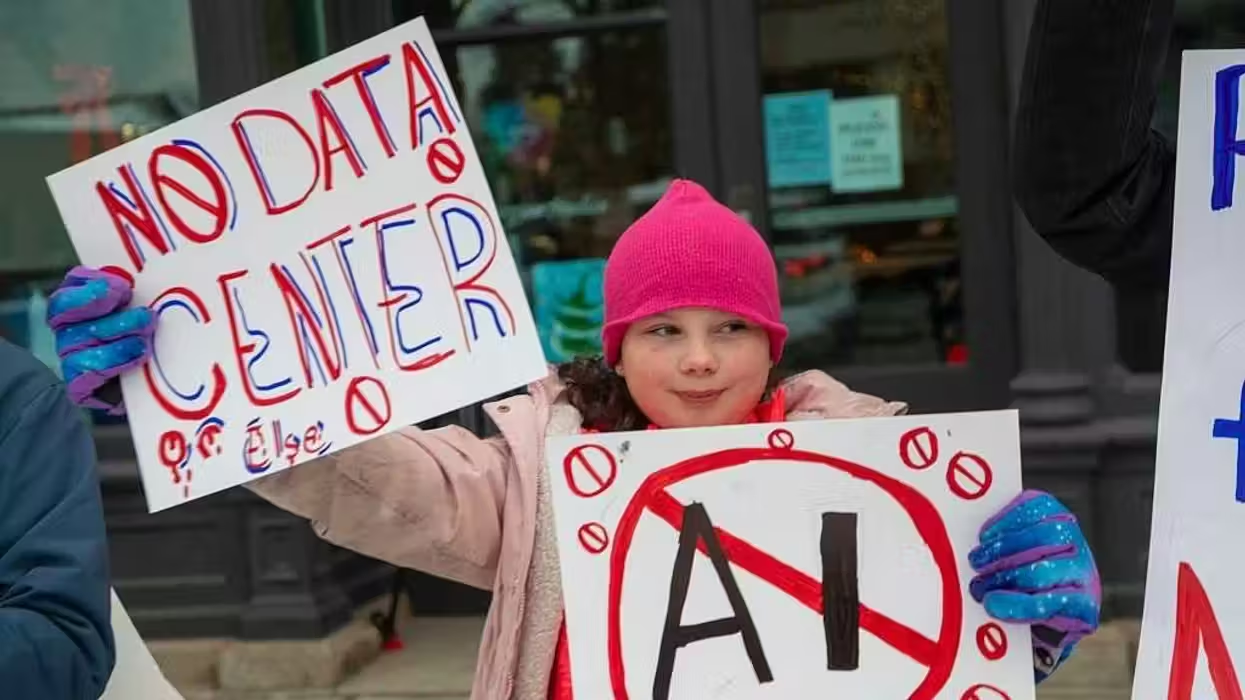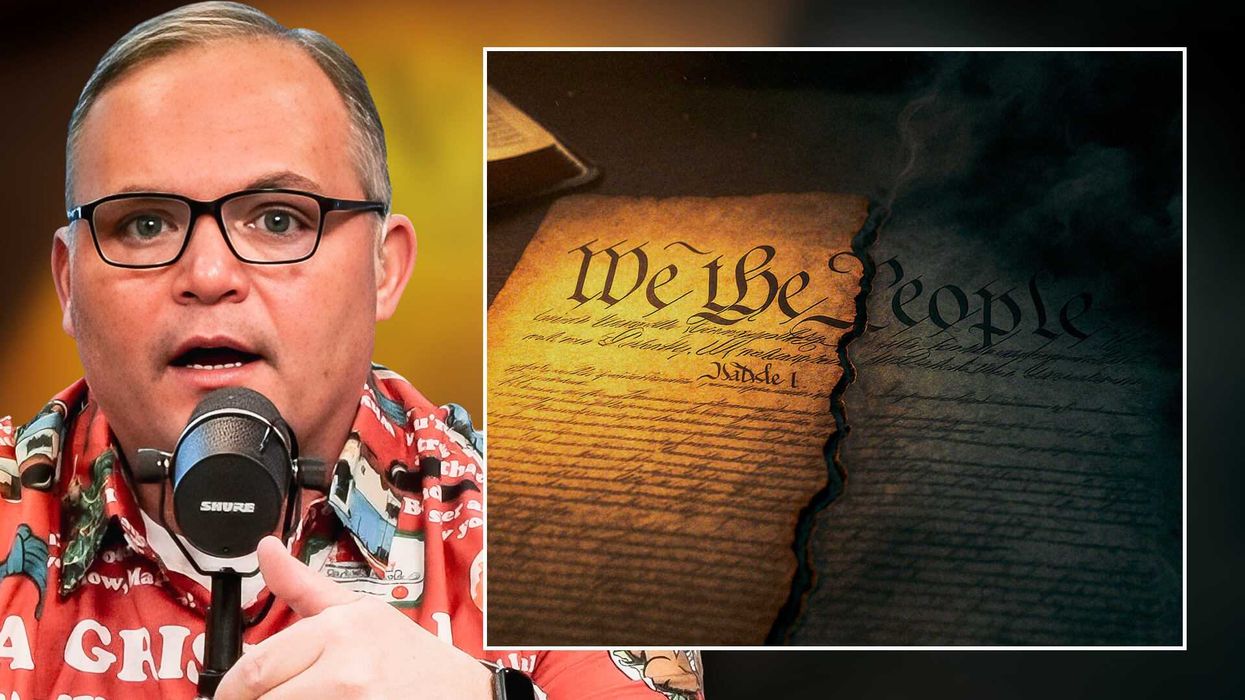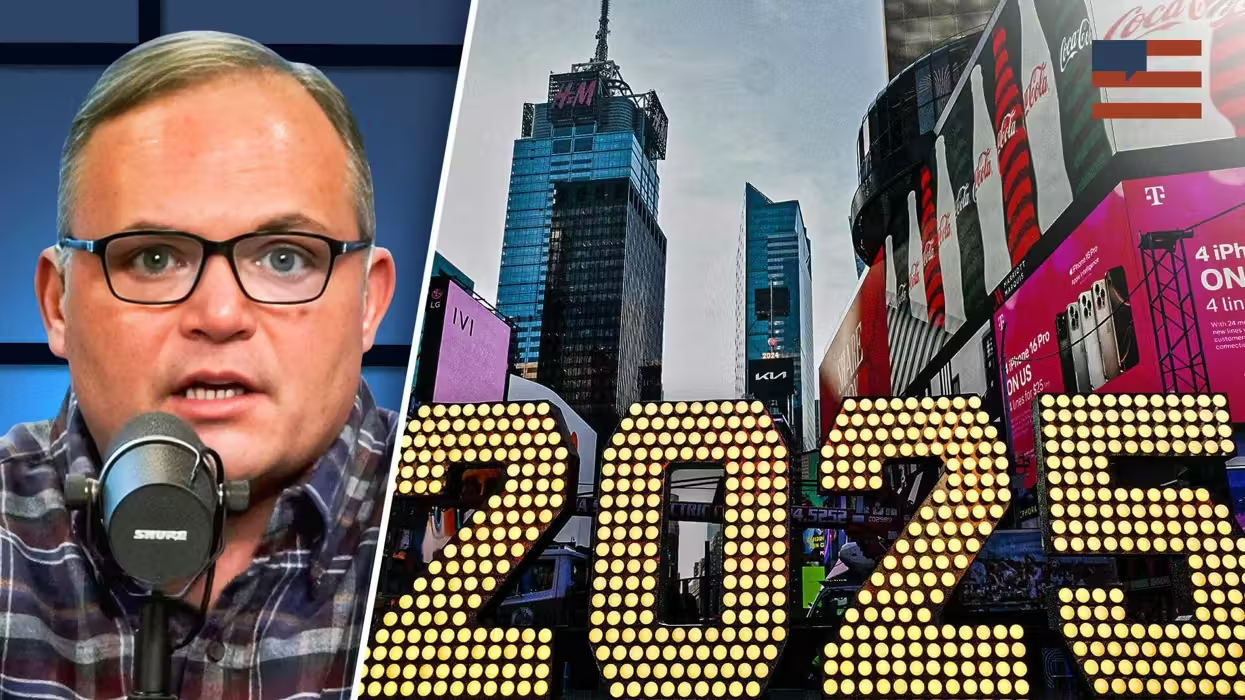© 2025 Blaze Media LLC. All rights reserved.
AP Exclusive: Officials Leak Details of U.S.-Iran Draft Nuclear Agreement
March 19, 2015
The sides are racing to meet a March 31 deadline for a framework pact and a full agreement by the end of June.
LAUSANNE, Switzerland (AP) — The United States and Iran are drafting elements of a nuclear deal that commits Tehran to a 40 percent cut in the number of machines it could use to make an atomic bomb, officials told The Associated Press on Thursday. In return, the Iranians would get quick relief from some crippling economic sanctions and a partial lift of a U.N. embargo on conventional arms.
Agreement on Iran's uranium enrichment program could signal a breakthrough for a larger deal aimed at containing the Islamic Republic's nuclear activities.
 In this handout photo provided by the White House, President Barack Obama speaks with President Hassan Rouhani of Iran during a phone call in the Oval Office September 27, 2013 in Washington D.C. (Photo by Pete Souza/White House via Getty Images)
In this handout photo provided by the White House, President Barack Obama speaks with President Hassan Rouhani of Iran during a phone call in the Oval Office September 27, 2013 in Washington D.C. (Photo by Pete Souza/White House via Getty Images)
The sides are racing to meet a March 31 deadline for a framework pact and a full agreement by the end of June — even as the U.S. Congress keeps up pressure on the administration to avoid any agreement leaving Iran with an avenue to become a nuclear power.
Officials said the tentative deal imposes at least a decade of new limits on the number of centrifuges Iran can operate to enrich uranium, a process that can lead to nuclear weapons-grade material. The sides are zeroing in on a cap of 6,000 centrifuges, officials said, down from the 6,500 they spoke of in recent weeks.
That's also fewer than the 10,000 such machines Tehran now runs, yet substantially more than the 500 to 1,500 that Washington originally wanted as a ceiling. Only a year ago, U.S. officials floated 4,000 as a possible compromise.
But U.S. officials insist the focus on centrifuge numbers alone misses the point. Combined with other restrictions on enrichment levels and the types of centrifuges Iran can use, Washington believes it can extend the time Tehran would need to produce a nuclear weapon to at least a year.
Right now, Iran would require only two to three months to amass enough material to make a bomb.
The pressure in Congress on the administration over Iran remained intense, with the chairman of the Senate Foreign Relations Committee saying he would move ahead with legislation giving lawmakers a say over any nuclear deal. And 360 House Republicans and Democrats — more than enough to override any presidential veto — sent a letter to Obama saying if an agreement is reached, Congress will decide on easing sanctions it has imposed.
"Congress must be convinced that its terms foreclose any pathway to a bomb, and only then will Congress be able to consider permanent sanctions relief," the lawmakers wrote.
Rep. Eliot Engel of New York, the top Democrat on the House Foreign Affairs Committee, told administration officials at a hearing Thursday that Congress cannot be marginalized and "any attempts to sidestep Congress will be resisted on both sides of the aisle."
The one-year breakout time has become a point the Obama administration is reluctant to cross in the set of highly technical talks, and that bare minimum would be maintained for 10 years as part of the draft deal. After that, the restrictions would be slowly eased. The total length of the deal would be at least 15 years, possibly 20.
As part of the agreement, punitive U.S. economic sanctions would be phased out over time. President Barack Obama has the authority to eliminate some measures immediately, and others would be suspended as Iran confirms its compliance over time. Some sanctions would be held to the later years of the deal, while a last set would require a highly skeptical U.S. Congress to change laws.
Although time periods, centrifuge caps and sanctions schedules have previously been discussed, most of the specifics divulged by the officials were new. They demanded anonymity because they weren't authorized to speak publicly on the confidential talks.
 In this picture released by an official website of the office of the Iranian supreme leader, Supreme Leader Ayatollah Ali Khamenei, center, attends a graduation ceremony of army cadets, in Tehran, Iran, Saturday, Oct. 5 2013. (AP/Office of the Iranian Supreme Leader)
In this picture released by an official website of the office of the Iranian supreme leader, Supreme Leader Ayatollah Ali Khamenei, center, attends a graduation ceremony of army cadets, in Tehran, Iran, Saturday, Oct. 5 2013. (AP/Office of the Iranian Supreme Leader)
Iran insists its program is solely for peaceful energy, medical and research purposes, though many governments believe it has nuclear weapons ambitions.
It's unclear how complete the draft is. Iran's deeply buried underground enrichment plant remains a problem, officials said, with Washington demanding the facility be repurposed and Tehran insisting it be able to run hundreds of centrifuges there. Iran says it wants to use the machines for scientific research; the Americans fear they could be quickly retooled for enrichment.
A planned heavy water reactor will be re-engineered to produce much less plutonium than originally envisioned, relieving concerns that it could be an alternative pathway to a bomb.
Any March framework agreement is unlikely to constrain Iran's missile program, which the United States believes may ultimately be aimed at creating delivery systems for nuclear warheads. Diplomats say that as the talks move to a deadline, the Iranians continue to insist that missile curbs are not up for discussion.
U.S. Secretary of State John Kerry and Iranian Foreign Minister Mohammad Javad Zarif met for the fourth straight day Thursday.
"We are pushing some tough issues," Kerry said after a morning meeting. "But we made progress."
The talks formally remain between the Iran and six powers, but Kerry and Zarif have done most of the heavy lifting in recent months.
If a deal is reached, officials say various layers of U.N. sanctions on Iran will be eased. That would include parts of the U.N. arms embargo that Russia and China want to ease within weeks of a full accord. Some restrictions would stay in place, however, such as on the transfer of missile technology.
After the deal expires, Iran could theoretically ramp up enrichment to whatever level or volume it wants.
Iran already can produce the equivalent of one weapon's worth of enriched uranium with the centrifuges it now runs. However, Iran's supreme leader, Ayatollah Ali Khamenei, spoke of eventually operating enough centrifuges to produce what 190,000 of its current models churn out.
___
Associated Press writers Deb Riechmann and Donna Cassata in Washington contributed to this report.
Want to leave a tip?
We answer to you. Help keep our content free of advertisers and big tech censorship by leaving a tip today.
Want to join the conversation?
Already a subscriber?
more stories
Sign up for the Blaze newsletter
By signing up, you agree to our Privacy Policy and Terms of Use, and agree to receive content that may sometimes include advertisements. You may opt out at any time.
Related Content
© 2025 Blaze Media LLC. All rights reserved.
Get the stories that matter most delivered directly to your inbox.
By signing up, you agree to our Privacy Policy and Terms of Use, and agree to receive content that may sometimes include advertisements. You may opt out at any time.






